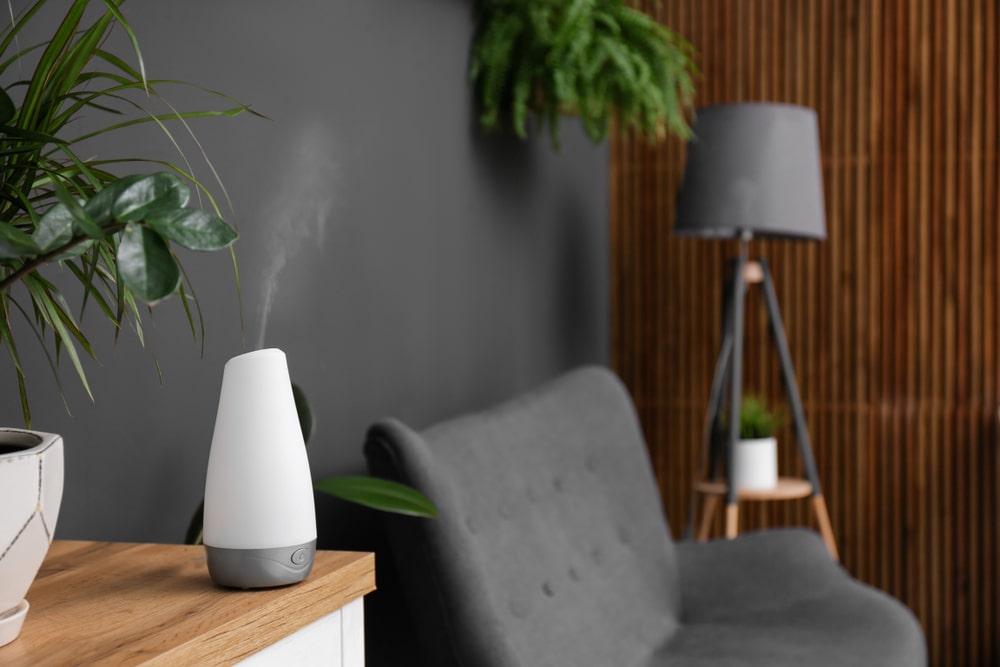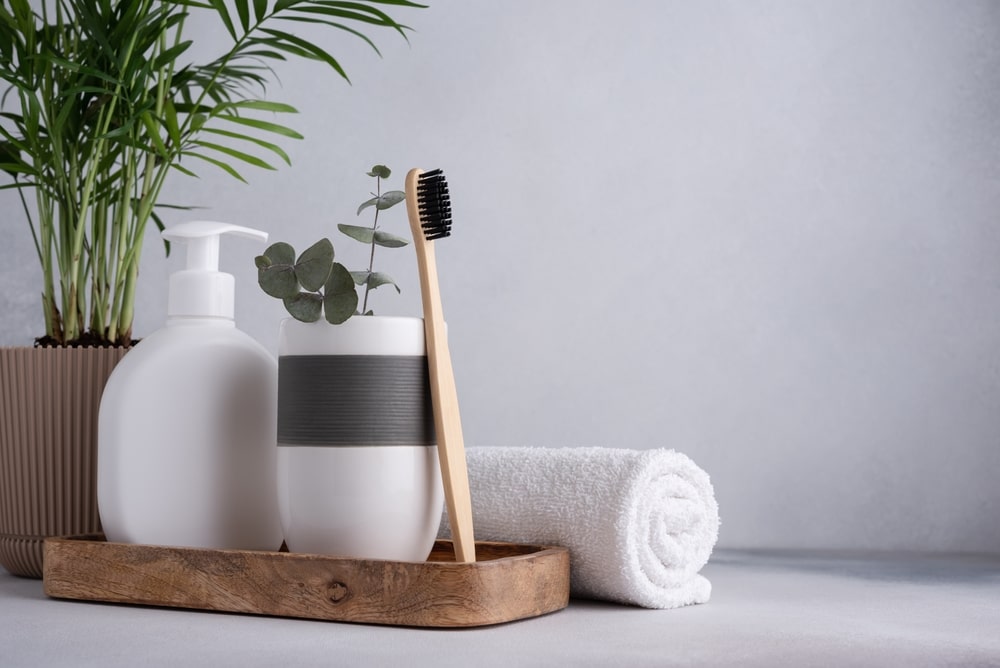You know to take extra precautions when out in public, but did you know plenty of household germ hotspots could also make you sick?
Your cell phone is nastier than a toilet seat, and so is your keyboard. It makes you wonder where other harmful bacteria may lurk in your home.
Well, wonder no more! Today, The Home Team is looking into the often-overlooked areas where household germ hotspots could jeopardize your life: the familiar corners of your home.
We’ll explore the labyrinth of everyday items, unveiling the secret homes of germs lurking around every corner. From your trusty kitchen sponge to your everyday toothbrush, these unsuspecting objects harbor dangers you haven’t considered.
So keep reading as we uncover the most common household germ hotspots, unlocking the 10 secrets that could safeguard your health and that of your loved ones.

Household germ hotspot: Air Freshener
You might think you’re giving your home a clean and fresh scent, but air fresheners can release volatile organic compounds into the atmosphere you breathe, says the National Capital Poison Center.
Health issues are thought to arise from the air fresheners’ secondary pollutants and chemicals. Secondary pollutants are formed when an item’s chemicals combine with the ozone already in the air.
Even when these products are used per the instructions, there are concerns about health situations with repeated exposure.
Household germ hotspot: Hand Towels
Just because you use it when your hands are clean doesn’t mean the actual towel is clean. While you probably have one hand towel in a bathroom that everyone uses after washing their hands, know that germs can stay on a towel for hours.
A hand towel is an exemplary spot for them to sit in a slightly damp atmosphere, according to a professor of virology at Queen Mary University in London.
And when it comes to hand towels being shared by family members and guests, experts advise that it’s better to use a few paper towels to throw in the trash or individual towels.
Household germ hotspot: Sheets
Here’s something to think about when you crawl into your bed at night: Your sheets are a breeding ground for dust mites. These mites might be microscopic, but these little pests can make getting sick easy.
While they don’t bite, the allergen they produce comes from their body fragments and fecal pellets, according to the American Lung Association. And they can be a significant trigger for those with asthma and allergies.
Constant exposure, for those sensitive to mites, can cause an immune system response that might trigger anything from watery eyes and a runny nose to congestion, persistent coughing, and even an asthma attack.
To combat dust mites, keep the humidity in your home below 50% and wash your sheets in hot water at least once a week.
Household germ hotspot: Kitchen Sponge
This shouldn’t come as a shock, but your kitchen sponge is one of your home’s dirtiest items. It’s carrying millions of harmful bacteria, according to the New York Times.
Each time you use the sponge to clean surfaces, all those germs have to go somewhere, and that somewhere is directly into that sponge.
So, we don’t recommend using your sponge to scrub off chunky food waste or wipe up fresh meat juices, unpasteurized milk, dirt from fruits and veggies, or your pet’s droppings. Just use a cleanser, paper towel, or water.
Besides this, experts recommend replacing sponges once a week or whenever they smell bad.
Household germ hotspot: Remote Control
Think about how many hands touch your DVD player, TV, or stereo remotes daily. The same goes for video game controllers. Remotes are filled with a ton of germs, especially if they aren’t washed regularly. WebMD states that a television remote has 70 bacteria per square inch!
So we recommend you use an anti-bacterial wipe to disinfect remotes and controllers at least once a week. Clean them more often if someone in your home is sick. Another good option is to use voice commands to control your electronics.

Household germ hotspot: Carpets
An immunologist and microbiologist at New York University Langone Medical Center says that carpets contain approximately 200,000 bacteria per square inch and are roughly 4,000 times dirtier than a toilet seat.
And think about this: Even the best vacuum cleaner doesn’t reach the very bottom of the carpet, leaving behind salmonella, E. coli, staphylococcus, and other bacteria.
So what can you do about it? Besides vacuuming weekly, you should have your rugs professionally steam-cleaned about once a year or learn how to clean your carpet yourself. You can also invest in machine-washable area rugs, like Ruggable.
Household germ hotspot: Shower Head
Even though you might not see it, dangerous bacteria could be lingering in your shower head. Nontuberculous Mycobacteria, also known as NTM, is a bacteria that transpires naturally in soil and water but has also found its way into plenty of shower heads.
While many of NTM’s over 150 species are entirely harmless, others can cause severe lung infections, especially in those with a weak immune system. To stop the growth of bacteria, you should clean out your shower head regularly.
Simply remove and submerge it overnight in vinegar. But be aware: You should check the manufacturer’s label first to ensure vinegar won’t harm the finish.
Household germ hotspot: Cutting boards
That cutting board you regularly use is nastier than you think: Plastic and wooden cutting boards can shelter harmful bacteria like Salmonella, which is the cause of roughly 1.2 million illnesses in the US annually.
So, to prevent bacteria from growing in remote cuts or grooves on your cutting boards, experts recommend cleaning them thoroughly with dish soap and hot water after each use. Once they’re dry, wipe them down with a cloth and vinegar.
But be aware: you should never soak or put a wooden cutting board in your dishwasher because it might warp, crack, or split.
For plastic cutting boards, apply a solution of one tablespoon of dishwashing detergent, four tablespoons of baking soda, and two of hydrogen peroxide. Let it sit overnight. The next day, wash it with dish soap and water and let it dry completely.
Household germ hotspot: Refrigerator
It might look clean, but your fridge likely harbors some disgusting germs. Spills can creep into trays and shelf crevices, where bacteria and mold can develop if the spills aren’t cleaned up immediately.
Fruit and veggie drawers must be addressed. Bacteria can stick around, get on your food, and make you ill. To prevent this from happening, you should wipe up spills immediately, clean surfaces thoroughly with soapy, hot water, and then thoroughly rinse.
Also, once a week, throw out any perishable foods that shouldn’t be eaten. A general rule of thumb to follow for fridge storage regarding cooked leftovers is four days; according to the USDA, raw poultry and ground meats take one to two days.

Household germ hotspot: Toothbrush
When was the last time you bought a new toothbrush? The truth of the matter is that there are more bacteria in your mouth than anywhere else in the body. So, clearly, your toothbrush is harboring some nasty bacteria.
Besides this, most folks store their toothbrush in the bathroom, somewhere near the toilet. This area tends to contain numerous airborne bacteria because of the moist and warm environment.
The Centers for Disease Control and Prevention recommends not sharing your toothbrush with anybody, rinsing them with water after every use, and letting them air-dry in an upright position.
You should also replace your toothbrush every three or four months, even sooner if the bristles have worn out.
We hope you found this article on common household germ hotspots helpful. But the fun doesn’t end here. The Home Team is always here with the best tips and tricks to help you.
For instance, we highly recommend you also read: 6 Simple Kitchen Design Mistakes That Are Costing You Money






